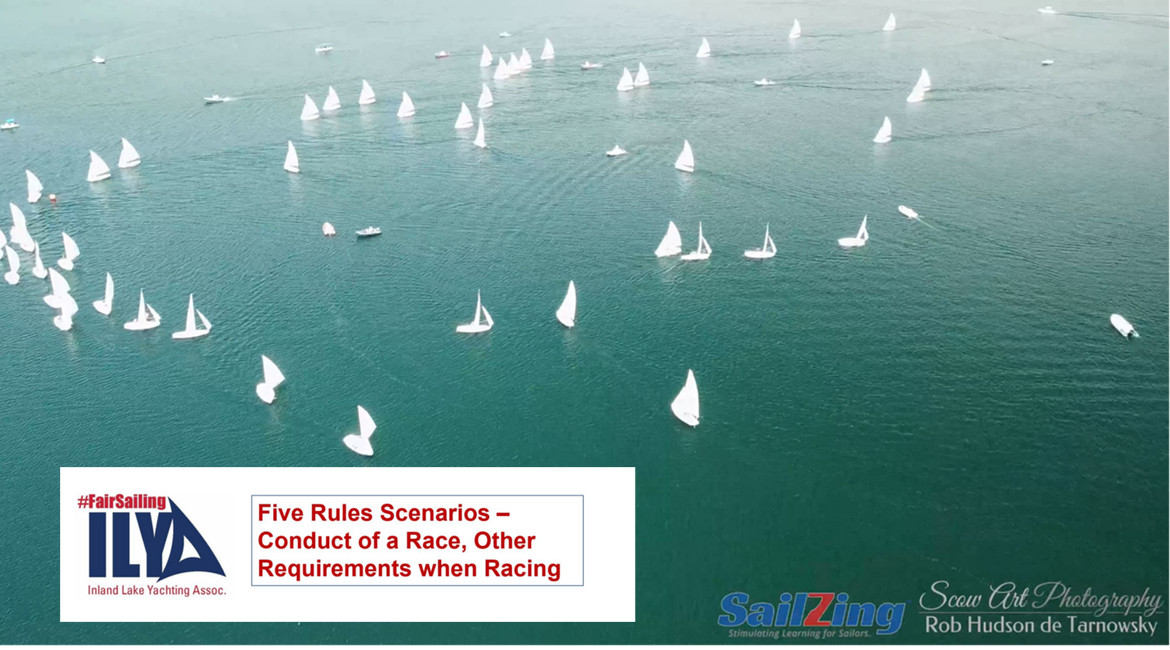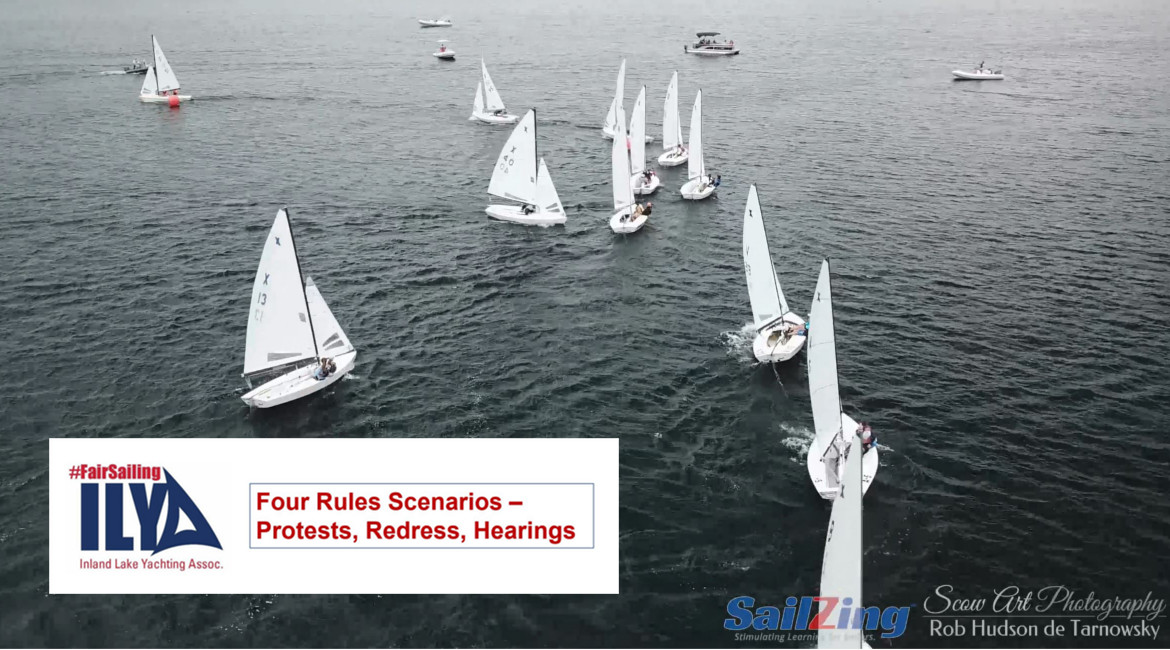The Inland Lake Yachting Association (ILYA) is building on its 2018 #FairSailing initiative to increase the level of rules knowledge and compliance. The initiative includes a Racing Rules of Sailing (RRS) presentation for clubs and sailing schools to use, weekly rules scenarios articles, a rules quiz, streamlining the protest process, and incentives for club and individual participation.
In 2018, we covered the basics of the RRS. In 2019, we’ll address more complex scenarios with new articles and a second-level quiz. We’ll use material from Dave Perry’s 100 Best Racing Rules Quizzes, as well as the World Sailing 2017-2020 Casebook. Thanks to Dave for granting permission to use his material!
We’ll publish the weekly ILYA rules scenarios articles here. You can also receive the weekly articles directly from the ILYA by subscribing to ILYA’s Scowlines.
Rules scenarios #5 uses the rules of Parts 3 and 4. To review the basics of the rules, see the SailZing Part 2 Racing Rules category.
Scenario 1 – Finishing
Boat Q is beating towards the finishing line in very light winds and adverse current. Just after her bow crosses the finishing line, she bears away and sails off the course. Boat P protests Q for failing to completely cross the finishing line. You are on the protest committee; how would you decide this? (From Perry, Quiz 50)
Click here for answer
Scenario 2 – U Flag
The race committee displays flag U as the preparatory signal. At the start, several boats are OCS (on the course side of the starting line) including Boat X. The race committee signals a general recall and restarts the race. Boat X wins the race, but on shore her score is posted as DSQ. She requests redress. You are on the protest committee; how would you decide this? (From Perry, Quiz 51)
Click here for answer
Scenario 3 – Sculling
Boat A is approaching a port-hand windward mark in very light air, close-hauled on starboard tack. Because she is not quite making the mark, her helmsman puts the tiller to leeward but the boat does not turn enough to miss the mark. In order to turn faster, the helmsman returns the tiller approximately to amidships and forcefully pushes it to leeward several times, being careful to never let the tiller cross the boat’s centerline. She clears the mark by about two feet. Now above close-hauled, and to continue turning around the mark, the helmsman pulls the tiller to windward and returns it to approximately amidships several times forcefully in order to turn the boat back down to close-hauled. Boat B protests A for these actions. You are on the protest committee; how would you decide this? (From Perry, Quiz 58)
Click here for answer
Scenario 4 – Damage
Two close-hauled boats on a beat (S and P) are on a collision course. When a couple of lengths away from S, P begins hearing away to pass astern of S. S holds her course. Just as it appears to S that P is about to pass astern, P misjudges her course and collides with S, putting a hole in the aft port corner of S’s hull and doing considerable damage to the stern. S protests P and P immediately takes a Two-Turns Penalty. S, after stopping to make some repairs, manages to finish the race though she is unable to proceed at full speed due to the damage. She loses several places as a result. Ashore, S files her protest against P and also requests redress. You are on the protest committee; how would you decide this? (From Perry, Quiz 61)
Click here for answer
Scenario 5 – Penalties
With one minute to go before the starting signal, Boat P (on port tack) tries to tack in to leeward of Boat S (on starboard tack). During the tack, S luffs to avoid contact and protests P. P immediately gets clear of S and takes a Two-Turns Penalty before the starting signal has sounded. P gets a good start and crosses S shortly thereafter. S protests P for not doing her Two-Turns Penalty after the starting signal. You are on the protest committee; how would you decide this? (From Perry, Quiz 63)
Click here for answer



